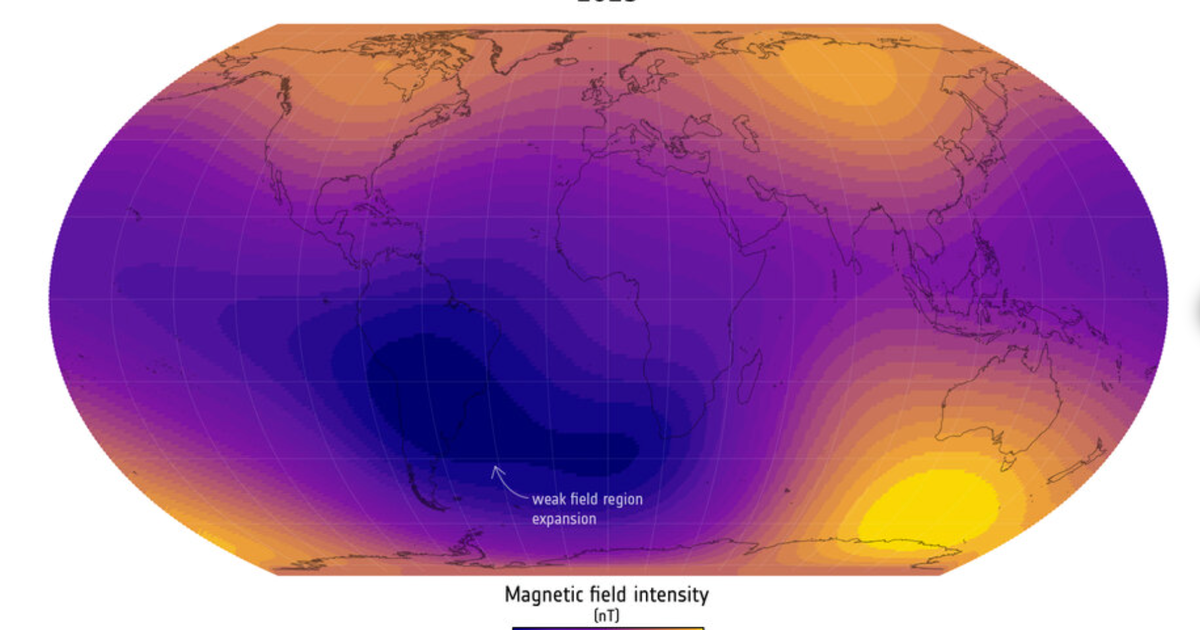A weak spot in the Earth’s magnetic field is growing over the South Atlantic Ocean, according to more than a decade’s worth of satellite data collected by scientists.
The magnetic field surrounding Earth protects the planet from cosmic radiation and particles charged by the sun. Scientists believe it is generated by the outer core of the Earth, according to a news release from the European Space Agency. The ESA said the “global ocean of molten, swirling liquid iron” in that layer of the planet creates electrical currents that generate the magnetic field.
The weak spot, known as the South Atlantic Anomaly, was first identified in the 19th century, the ESA said. It is southeast of South America and southwest of Africa. In this area, the planet’s magnetic field dips down, according to NASA. Satellites that pass over it are hit with higher doses of incoming radiation, which can cause technical issues and even blackouts.
ESA (Data source: Finlay, C.C. et al., 2025)
The ESA studied the spot for 11 years, from 2014 to 2025. Three different satellites, known as Swarm, precisely measured the planet’s magnetic signals during that period. The data was published in the journal Science Direct.
The satellite data showed that the South Atlantic Anomaly had expanded by an area “nearly half the size of continental Europe,” or about two million square miles. The speed of the area’s weakening has increased since 2020, the ESA said, with different parts of the anomaly changing at different rates.
“The South Atlantic Anomaly is not just a single block,” says lead author Chris Finlay, Professor of Geomagnetism at the Technical University of Denmark, in the ESA’s news release. “It’s changing differently towards Africa than it is near South America. There’s something special happening in this region that is causing the field to weaken in a more intense way.”
ESA (Data source: Finlay, C.C. et al., 2025)
Finlay said that magnetic field lines emitting from the core are bouncing back into it. It’s not clear why this is happening, but it is contributing to the anomaly’s weakening in those areas, the ESA said.
The ESA satellites found other changes in the Earth’s magnetic field. In the southern hemisphere, there is another area where the magnetic field is particularly strong. Two other anomalies exist in the northern hemisphere: One near Canada and one over Siberia. Both are stronger than the rest of the field. However, the one near Canada has shrunk by an area the size of India, while the one over Siberia has grown by an area the size of Greenland, the ESA said.
ESA/AOES Medialab
The satellites will continue to study the planet’s magnetic field in the coming years, the ESA said.
“It’s really wonderful to see the big picture of our dynamic Earth thanks to Swarm’s extended timeseries,” Swarm Mission manager Anja Stromme said in a statement. “The satellites are all healthy and providing excellent data, so we can hopefully extend that record beyond 2030, when the solar minimum will allow more unprecedented insights into our planet.”
First Appeared on
Source link














